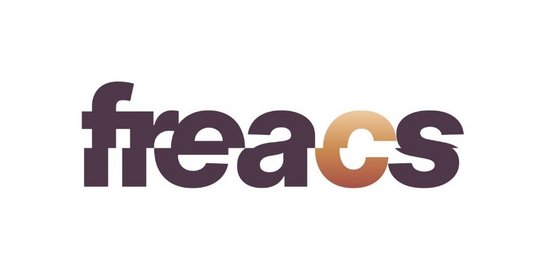FREACS
| Start: | 21 April 2022 (External Call project) |
| Duration: | 36 |
| Aim: | Soil management effects on soil organic matter properties and carbon sequestration |
| Contact: | Coordinator Dr. Pierre Barré, École Normale Supérieure, France |

Soil organic carbon (SOC) is a keystone for most soil functions and associated soil ecosystem services (e.g., biomass production, flood and erosion mitigation, etc.). SOC is also the main part of the large soil organic matter reservoir feeding soil life with energy and nutrients, and increasing SOC stocks can help mitigate climate change. The SOC reservoir has been strongly depleted by human land-use. Restoring SOC stocks using more sustainable management practices has been suggested as a way to improve soil health while mitigating global warming.
Soils contain organic carbon with highly contrasted residence times, ranging from a few hours to millennia. This is due to the complex combination of mechanisms driving its persistence. The different organic matter forms of SOC support different functions in soils. SOC with short residence times is easily metabolized, and sustains soil biological activity, but is rapidly respired as CO2 and lost to the atmosphere. Conversely, persistent SOC with long residence time can lock up C and thus mitigate climate change, but does not fuel biological activity. Our insufficient knowledge of SOC kinetic pools partitioning hampers efforts to estimate soil health, and limits the accuracy of model projections of the fate of the SOC reservoir at all spatial scales.
Project partners
Country | Organization |
Finland | University of Helsinki |
Finland | Finnish Meteorological Institute |
France | Sorbonne University |
France | Institut national de recherche pour l'agriculture, l'alimentation et l'environnement |
France | Greenback |
Germany | Thuenen Institute of Climate-Smart Agriculture |
New Zealand | Manaaki Whenua - Landcare Research |
Call text
Soil organic carbon (SOC) is a keystone for most soil functions and associated soil ecosystem services (e.g., biomass production, flood and erosion mitigation, etc.). SOC is also the main part of the large soil organic matter reservoir feeding soil life with energy and nutrients, and increasing SOC stocks can help mitigate climate change. The SOC reservoir has been strongly depleted by human land-use. Restoring SOC stocks using more sustainable management practices has been suggested as a way to improve soil health while mitigating global warming.
Soils contain organic carbon with highly contrasted residence times, ranging from a few hours to millennia. This is due to the complex combination of mechanisms driving its persistence. The different organic matter forms of SOC support different functions in soils. SOC with short residence times is easily metabolized, and sustains soil biological activity, but is rapidly respired as CO2 and lost to the atmosphere. Conversely, persistent SOC with long residence time can lock up C and thus mitigate climate change, but does not fuel biological activity. Our insufficient knowledge of SOC kinetic pools partitioning hampers efforts to estimate soil health, and limits the accuracy of model projections of the fate of the SOC reservoir at all spatial scales.
Qualitative methods have been developed for decades to estimate the proportions of stable or active SOC fractions such as the widely used POM/MAOM physical SOC fractionation schemes. Recently, a method based on Rock-Eval® thermal analysis data and the PARTYsoc machine-learning model has enabled quantifying the size of SOC fractions that are stable or active at the century-scale.
With the FREACS project, our first objective is to quantify SOC fractions (POM/MAOM and centennially stable/active), their saturation level and their subsequent SOC storage potential on topsoil and subsoil samples from 6 soil networks: EU LUCAS Soil, French RMQS and RENECOFOR, Finnish network of farms, German and New Zealand agricultural soil networks. We will also deliver machine-learning models to predict all SOC fractions using quicker and cheaper vis-NIR and MIR soil spectroscopy or widely available environmental data.
Our second objective is to decipher the mechanisms explaining long-term SOC persistence by studying a subset of 200 soils with a wide range of centennially stable SOC content. We will characterize the chemical (pyrogenic C & C, H, O, N, P stoichiometry of organic matter), mineralogical (clays & oxi-hydroxides) and microbial (microbial necromass & energy return on investment of SOC use) properties of these topsoils and subsoils to determine the relative contribution of these factors to long-term SOC persistence.
Our third objective is to will evaluate the sensitivity of SOC fractions to changes in land-cover or management practice and to use maps of SOC fractions to improve the accuracy of SOC dynamics models simulations. The state-of-the-art ORCHIDEE Land Surface model, RothC and Yasso SOC models will be re-calibrated to match SOC fractions data and used to simulate more accurately SOC stock evolution and associated greenhouse gas emissions under contrasting land-use and soil management scenarios by 2050.
Our fourth objective is to ensure access to all data produced in the project and to produce maps of SOC fractions and improved SOC projections for EU and New Zealand that FREACS will deliver in a public data visualization website dedicated to the various interested stakeholders.
FREACS will leverage the complementary and recognized skills of all project partners (Biogeochemistry, Mineralogy, Microbial ecology, Pedology, Pedometrics, Data science, Web design). The results will bring key insights on the understanding of SOC sequestration on regional and continental scales and will also be used by a private company to develop an innovative rating system for SOC and soil health, ensuring impact far beyond the academic world.